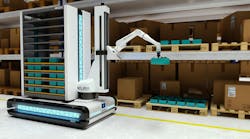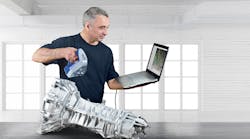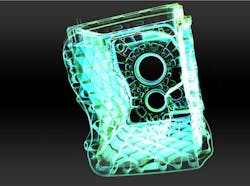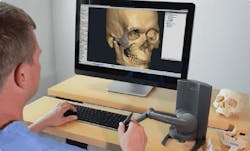Artec 3D’s scanners, including the Eva, Leo and new Ray, have been used in such prestigious and far out places as the White House and International Space Station, but the technology is still accessible enough for everyday use on the factory floor. And because of that, it’s become a vital tool to current transformation of manufacturing, a link between the physical and digital, used for metrology, quality inspections, design, 3D printing.
Here’s how we think it will impact manufacturing in 2019.
1. Software, Not Hardware, Will Define the Industry Elite
The act of creating professional-grade 3D scans has become easier-and-easier. Artec Studio 13 now even includes an X-Ray feature to preview a scan before processing. A task that was once reserved for highly trained technicians has become nearly as easy as point-and-shoot. The side effect of democratizing the 3D-scanning process is that the volume of data being captured continues to grow at a rapid rate. The new challenge for 3D scanner manufacturers is rooted in software, and we predict the industry will release improved software to deal with processing enormous amounts of data as almost as fast and easily as it’s collected.
2. New Applications Will Emerge
The benefits of 3D scanning to create custom-fitted prosthetics has been well established. However, the technology has moved beyond mankind and into the animal kingdom. Mr. Stubbs, an alligator who was saved from illegal traffickers and lost his tail, made headlines for receiving a prosthetic replacement created using Artec’s 3D Scanner.
The advancements in virtual reality have also created new use-cases. The Montpellier Medical University is developing an interactive virtual cadaver dissection simulation with the help of 3D scanning. These VR cadavers will allow students the opportunity to gain additional training, prior to using a physical subject. Weird, new and unexpected applications for 3D scanning will continue to step into the spotlight.
3. 3D Models Will Replace Product Photos in Retail
Furniture retailers now have libraries of 3D models of their products, often made with 3D scans. They select the items they need and add them to the scene. This is much faster than organizing a new photo shoot for each new image and certainly saves a lot on physical storage space. Using 3D renders also allows the object to be spun and angled to perfectly and naturally fit the environment it is being dropped into. This is an invaluable tool for any manufacturer wanting to accurately communicate to a customer a world away what a product or part looks like down to the millimeter.
And as augmented and virtual reality become more widespread, this application should make those technologies even more realistic and immersive, allowing for more realistic plant and equipment simulations.
4. Metal & Ceramic 3D Printers to Drive 3D Scanner Sales
Recently there has been a large increase in the numbers of metal and ceramic 3D printers to enter the market. Up until now, 3D printers have predominantly been used for prototyping plastic parts. However, there are now many industrial metal and ceramic printers set to dominate the market. Due to the complex heating process that these printers require, there is a risk that the parts may become warped during the build process. Parts produced by these printers will need to undergo quality control measures. In line with the increase in production and sales of these new printers, we expect there to be a significant increase in sales of 3D scanners that can inspect the parts and compare them to their original files.












